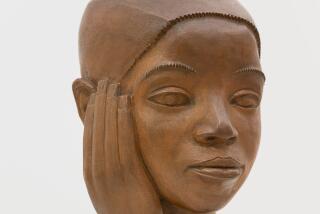Color of change
âThat was the first part of my life,â says Jay T. Last, a founder of Fairchild Semiconductor and leader of the team that developed the integrated circuit for commercial use. When he retired from the computer field, he happily found other things to absorb his restless mind. âThis is the second part.â
At the Huntington Libraryâs Boone Gallery, Last has just had his first tour through an exhibition featuring a collection heâs spent more than three decades assembling -- âThe Color Explosion: Nineteenth Century American Lithography from the Jay T. Last Collectionâ (through Feb. 22). It began as a hobby.
In 1968, he moved to L.A., becoming vice president of technology at Teledyne. In his spare time, he frequented flea markets and was bedazzled by an older technology, one in which images were produced by individual application of color from an inked stone. âI started seeing orange crate labels, and I fell in love with them,â says Last, 80. He marveled at their variety and inventiveness of design and was intrigued by the history the images told.
Later he wrote a book on crate labels and expanded his collecting into all types of color lithography. He bought up other peopleâs collections, eventually amassing what is one of the largest collections of color lithography in the world -- 135,000 items, which are gradually being given as gifts to the Huntington.
A large, burly man, Last clearly enjoys taking on challenges in unexplored areas. When he realized there was no standard text on the subject, he set out to write one.
He spent five years researching the development of lithography in America and a few years ago published âThe Color Explosion: Nineteenth-Century American Lithography.â
The exhibition features about 200 objects, including posters, books, sheet music, advertising cards, card and board games, and flower and fruit catalogs. âThe selection was based on three things -- lithographic excellence, historical importance and visual appeal,â says David Mihaly, the Huntingtonâs curator of lithography and ephemera.
Last points out that two histories are being told -- that of color lithography, its development and uses, and that of U.S. society as it grew after the Civil War. Among the many rare prized items is a hefty volume in a showcase -- the 1860 lithographic edition of John James Audubonâs illustrated epic âThe Birds of America.â The original, says Mihaly, was engraved and hand-colored, and this was color lithographed.
A board game features Nellie Bly, the adventurous journalist who set out to replicate the around-the-world journey Jules Verne imagined in his novel -- she bested his 80 days.
Thereâs also a fine arts print based on an Albert Bierstadt painting -- âSunsetâ shows a pastel sunset over a lake in a forest. Bierstadt was so pleased with the âchromoâ that he wrote a letter to lithographer Louis Prang, calling it âvery satisfactory and much better than any other foreign reproduction of my pictures.â The letter is also here, one of the collectorâs more recent and proudest finds.
--






